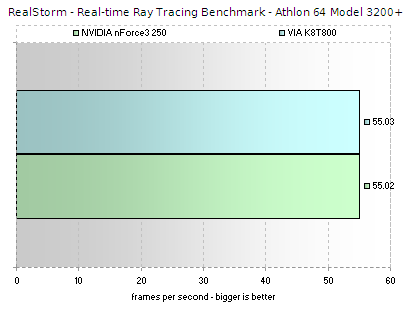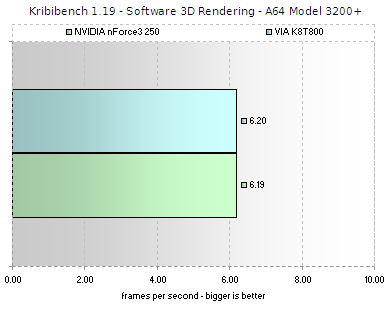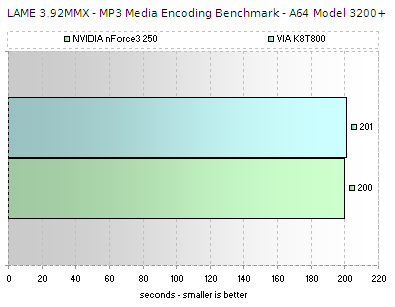System Benchmarks
Our system tests add CPU performance into the mix, on top of what we just saw with the memory subsystem tests. This lets us evaluate CPU performance in the test system, checking that nothing is untoward or obviously wrong. In a second generation chipset, we're not looking for much change over the first generation, especially when working with an architecture like Athlon 64. As we've already stressed, the performance limiting aspects of an Athlon 64 system all lie on the processor (for the most part), so we're just looking for consistency here.Realstorm is a 3D renderer too, but its remit falls into the realm of realtime raytracing. The scene is rendered as geometry only, then the lighting is calculated by means of rays, each corresponding to a ray of light that your eye would see. It's all done on the CPU too, making it a good system test.

Performance parity is what we've been looking for, performance parity is what we inevitably see.
Kribibench is a software 3D renderer, with everything done entirely on the processor. It's Realstorm-like in its remit, making it another good system-level test for us to use.

More of the same, apologies that the performance commentary isn't more inspiring, but you can understand why.
Quake 3 next.

LAME to finish us off. Being purely CPU limited, don't expect a graph to knock your socks off.

While it's tempting to yawn at the graphs, at least we can take encouragement from the performance being equal with VIA's well regarded first generation effort.









